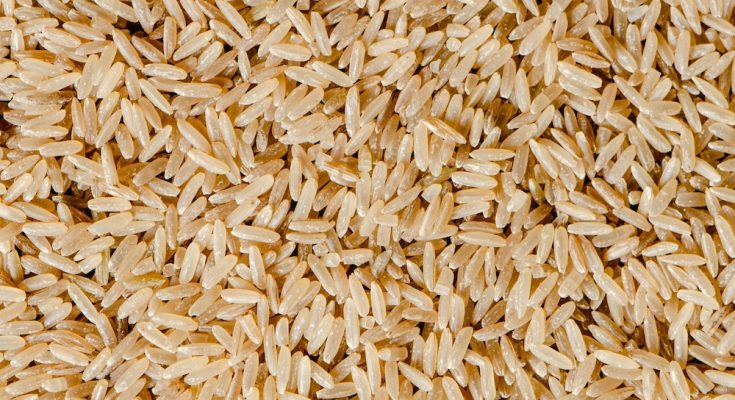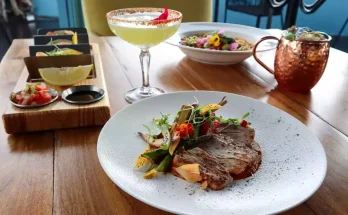Those seeking brown rice for their daily nutrition discover a grain that represents not merely unpolished rice but a fundamentally different approach to nourishment. The distinction between brown and white rice extends far beyond appearance, reaching into matters of health, tradition, and the choices modern consumers make about their diet. In Singapore, where health consciousness has risen markedly over recent decades, brown rice has transitioned from niche health food to mainstream staple, found increasingly on dining tables and restaurant menus alike.
Understanding the Brown Rice Difference
The transformation of paddy into edible rice involves removing the inedible outer hull. At this juncture, millers face a choice that determines the final product’s nutritional profile. White rice undergoes additional processing that strips away the bran layer and germ, leaving only the starchy endosperm. Brown rice retains these outer layers, preserving nutrients that milling discards.
This seemingly simple difference carries profound nutritional implications. The bran and germ contain the majority of rice’s vitamins, minerals, and fibre. Removing them produces a grain that cooks faster and keeps longer but sacrifices much of its nutritional value. The brown variety preserves these benefits, offering a grain that nourishes more comprehensively than its refined counterpart.
Nutritional Composition and Benefits
The nutritional superiority of brown rice over white rice manifests across multiple dimensions. A comparison reveals advantages that health-conscious consumers find compelling:
- Dietary fibre content approximately four times higher than white rice
- Magnesium levels supporting bone health and metabolic function
- Manganese concentrations essential for enzyme function and antioxidant activity
- Selenium presence contributing to thyroid function and immune response
- B vitamins including thiamine, niacin, and vitamin B6
- Phosphorus amounts supporting bone and tissue health
- Essential fatty acids from the intact germ
Singapore’s Health Promotion Board recognises brown rice as part of a balanced diet, recommending it as an alternative to refined grains for better health outcomes. This official endorsement reflects growing evidence linking whole grain consumption to reduced disease risk.
The Fibre Advantage
Dietary fibre stands as brown rice’s most celebrated attribute. A serving of cooked brown rice provides approximately 3.5 grammes of fibre, compared to less than one gramme in equivalent white rice. This difference matters considerably for digestive health and metabolic function.
Fibre serves multiple beneficial roles in human physiology. It slows digestion, producing more gradual rises in blood glucose levels compared to refined grains. This characteristic proves valuable for managing diabetes and maintaining steady energy levels throughout the day. The slower digestion also promotes satiety, helping control appetite and supporting weight management efforts.
The insoluble fibre in brown rice supports digestive regularity, whilst soluble fibre components may contribute to cholesterol management. These combined effects position brown rice as particularly suitable for individuals addressing cardiovascular health concerns or metabolic syndrome.
Glycaemic Response and Blood Sugar Management
The glycaemic index measures how rapidly foods raise blood glucose levels. Brown rice scores lower on this scale than white rice, a distinction with practical health implications. The intact bran layer slows starch digestion, producing a more measured glucose response.
For Singapore’s population, where diabetes prevalence has risen to concerning levels, choosing lower glycaemic index foods represents a pragmatic dietary strategy. Brown rice fits naturally into meal planning for individuals managing blood sugar, whether diagnosed diabetics or those pursuing prevention.
Culinary Applications and Preparation
The firmer texture and nuttier flavour of brown rice initially challenged cooks accustomed to white rice’s softer character. Yet these qualities offer culinary opportunities rather than mere obstacles. Brown rice provides a hearty foundation for grain bowls, absorbs flavours well in pilafs and risottos, and adds textural interest to salads.
Cooking brown rice requires adjustments from white rice preparation:
- Longer cooking times typically 40 to 50 minutes compared to 15 to 20 minutes
- Increased water ratios generally 2.5 cups water per cup of rice
- Soaking benefits reducing cooking time and improving digestibility
- Resting period allowing steam to complete cooking after heat removal
Modern rice cookers often include specific settings for brown rice, simplifying preparation and ensuring consistent results.
Integration into Singapore’s Food Culture
Singapore’s diverse culinary landscape has accommodated brown rice with remarkable adaptability. Health-focused eateries routinely offer it as an alternative to white rice. Some establishments specialise in brown rice-based meals, catering to consumers prioritising nutritional density.
Traditional dishes accept brown rice substitution with varying success. Fried rice preparations work admirably, the firmer grains maintaining structure through high-heat cooking. Porridge adaptations require patience as longer cooking times are needed to achieve desired consistency. Nasi lemak made with brown rice presents a nutritious twist on the beloved national dish, though purists may debate the deviation from tradition.
Storage and Quality Considerations
The oils present in brown rice’s germ create storage challenges absent with white rice. These oils can turn rancid with prolonged exposure to heat and air, limiting shelf life to approximately six months under typical conditions. Refrigeration extends storage life considerably, whilst vacuum sealing or freezer storage preserves quality longest.
Purchasing from suppliers with good stock turnover ensures fresher products. Examining packaging dates and buying quantities matched to consumption rates prevents waste from deterioration.
Making the Transition
Individuals accustomed to white rice may find immediate complete substitution challenging. Gradual transitions often succeed where abrupt changes fail. Mixing brown and white rice in increasing proportions allows palates to adjust whilst beginning to capture nutritional benefits. Eventually, many find they prefer brown rice’s more substantial character and nutty flavour.
The documented health advantages, combined with increasing availability and culinary versatility, position brown rice as a sensible choice for those seeking to improve dietary quality without abandoning familiar foods. Singapore’s embrace of this nutritious grain demonstrates how traditional foodways adapt to incorporate modern nutritional understanding whilst preserving essential cultural connections to brown rice.




